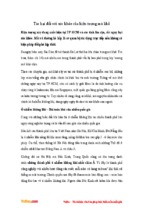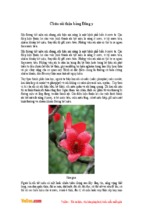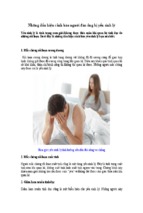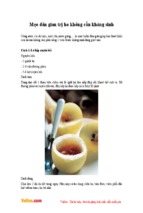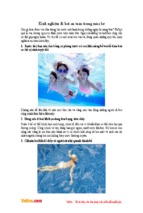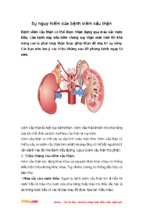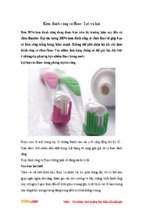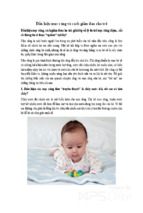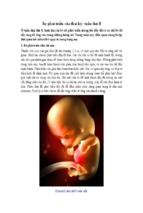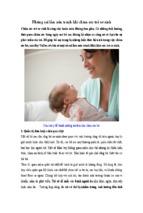SORT
T
E
IN
SUSTAIN
5S
SE
SH
IZE
STANDARD
Manual for
Implementation of
5S in Hospital Setting
Directorate General of Health Services
Ministry of Health and Family Welfare
SORT
T
E
IN
SUSTAIN
5S
SE
SH
IZE
STANDARD
Manual for
Implementation of
5S in Hospital Setting
April 2015
Published by
TQM Unit, Hospital Services Management, DGHS
Dhaka, Bangladesh
Website: www.hsmdghs-bd.org
Supported by
Safe Motherhood Promotion Project (SMPP) Phase 2
Japan International Cooperation Agency (JICA)
Publishing Period:
April 2015
Design & Printing :
Dynamic Printers, Dhaka
SORT
T
NE
SUSTAIN
SE
SH
I
5S
IZE
Implementation of 5S in Hospital Setting
STANDARD
02
Mohammed Nasim, MP
Minister
‡gvnv¤§` bvwmg, Ggwc
gš¿x
¯^v¯’¨ I cwievi Kj¨vY gš¿bvjq
MYcÖRvZš¿x evsjv‡`k miKvi
Ministry of Health & Family Welfare
Govt. of the People’s Republic of Bangladesh
Message
Quality healthcare delivery remains as the biggest challenge for the public
hospitals in Bangladesh like many other developing countries where inadequate resources and increasing population overburden the health structure.
Poor governance and managerial weakness are the most important inhibiting
factors in overcoming the challenges. The Government has already initiated
a number of interventions to improve the quality of health care services. The
latest approach is the improvement of hospital service delivery through
5S-CQI-TQM approach, a management technique which has emerged as a
new culture in the health sector. 5S-CQI-TQM works as a framework for all
quality improvement approaches, while 5-S is the initial step towards establishing Total Quality Management.
The 5S approach is a simple but effective way of bringing quick improvement in the working environment and service quality by involving all the
hospital staffs including efficient use of resources and waste reduction. 5S
also brings a practice of quality culture, morale, motivation and job satisfaction among the staff which leads them to solve minor problems through leadership and personal initiatives. After introducing this technique in some of
our hospitals, we have found encouraging improvements within a short
period of time. This technique has also proven itself as a low cost and easy to
implement.
This manual has been developed considering the experiences gathered over
the past few years and describes both the 5S operational framework and
implementation methods in a simple way. As planned, Bangladesh Government has started scaling up of 5S –CQI –TQM implementation at the public
hospitals. At this stage, this manual will serve as guidance on the practices of
5S by the managers and staff working at the hospitals. Particularly, it will be
helpful at the beginning of TQM journey. I hope, through application of this
Japanese management technique we would be able to improve the quality of
hospital services at our desired level.
Joy Bangla, Joy Bangabandhu
Long live Bangladesh.
SORT
Implementation of 5S in Hospital Setting
T
E
IN
SUSTAIN
SE
SH
5S
03
IZE
STANDARD
Message
The 5S- CQI-TQM approach was initiated as a pilot program in four
hospitals in 2011 by the Hospitals and Clinics section of DGHS with the
technical assistance from JICA. Now, at the end of 2014, this approach
has been scaled up in 52 hospitals and has created a demand in about a
hundred hospitals where we are planning to expand the program within a
short time. This approach is a low cost program which can bring visible
changes in the quality of services in the hospitals within a reasonable
short period of time and also brings satisfaction to the service providers
along with the clients. It has always been a pleasure to work for such a
program where success is noticeable at the outset of the program. Though
we have scarce resources and abilities, we cannot compromise with the
quality in the service delivery while dealing with the life of a human
being. This program has shown a light by which we can achieve our target
of Quality Healthcare.
To achieve the goal of quality healthcare we need to follow the pathway
of 5S- CQI-TQM to make our journey shorter, less problematic and easy
to implement with visible achievements. This manual is designed in such
a way that anybody can understand the concept and can replicate in
his/her working area to bring noticeable positive changes within a short
time.
I hope that the TQM managers and the members of the Work Improvement Teams will be directly benefited from this manual and will be able
to provide quality healthcare services. At the same time, this will indirectly bring satisfaction to the service providers and the clients as well.
Prof. Dr. Deen Mohd. Noorul Huq
Director General
Directorate General of Health Services
Mohakhali, Dhaka
SORT
T
NE
SUSTAIN
SE
SH
I
5S
IZE
Implementation of 5S in Hospital Setting
STANDARD
04
Foreword
The manual, Implementation of 5S in Hospital Setting, is designed for the
program managers and facilitators working in quality improvement of
hospital services. Section 1of this manual provides basic understanding
on 5S, while the second section focuses on operational issues, and
provides guideline how to implement the process at hospital setting.
5S-CQI-TQM is a management technique that was used intestinally in
Japan in industrial sector. This technique was then applied in hospital
setting to improve quality of services. In South-East-Asia, Sri Lanka has
successfully applied this methodology at the public hospitals for
improvement of quality of services. This technique is currently being
practiced in several African and Asian countries including Bangladesh.
5S-CQI-TQM is a participatory management approach where everybody
participates. The 5S (Sort, Set, Shine, Standardize and Sustain) is aimed
at bringing satisfaction of staff as well as the patients through
improvement of working environment. The next step of the process is
CQI or continuous quality improvement, directed to improve the
management system/process. TQM (total quality management) is
achieved through achievement of 5S and incremental but continuous
improvement of service delivery process.
This manual provides basic understanding of the management technique
and guidance to implement 5S at hospitals in Bangladesh. This manual is
user friendly with useful illustrations, making it attractive to users and
practitioners of 5S.
Prof. Dr. Md. Shamiul Islam
Director, Hospitals & Clinics &
Line Director, Hospital Services Management
Directorate General of Health Services
Mohakhali, Dhaka
SORT
Implementation of 5S in Hospital Setting
T
E
IN
SUSTAIN
SE
SH
5S
05
IZE
STANDARD
Contributors
Prof. Dr. Md. Shamiul Islam
Director, Hospital & Clinics & Line Director, Hospital Services Management, DGHS
Dr. Md. Quamrul Islam
Director, PHC & Line Director, MNC&AH, DGHS
Dr. A. K. M Saiedur Rahman
Assistant Director, MBPC, DGHS
Dr. A. S. M. Nazmul Huq
Deputy Program Manager, TQM, Hospital Services Management, DGHS
Dr. Md Aminul Hassan
Deputy Director, Heath Economics Unit, Ministry of Health & Family Welfare
Ms. Yukie Yoshimura
Chief Advisor, SMPP-2, JICA, Bangladesh office
Dr. Md. Tajul Islam
Technical Adviser, SMPP-2, JICA, Bangladesh office
Dr. Rafiul Alam
Senior Project Officer, SMPP-2, JICA , Bangladesh office
Special Acknowledgment
Prof. Dr. Deen Mohammad Noorul Huq
Director General of Health Services
Prof. Dr. A. B. M. Abdul Hannan
Director, Medical Education & HMPD and Line Director Pre-service Education and
Additional Director General (Admin. In Charge), DGHS
Prof. Dr. Abul Kalam Azad
Additional Director General (Planning & Development) and Director, MIS-Health, DGHS
Dr. S. A. J. Md. Musa
Ex Director, PHC & Line Director, MNC&AH, DGHS
SORT
T
NE
SUSTAIN
SE
SH
I
5S
IZE
Implementation of 5S in Hospital Setting
STANDARD
06
Content
Chapter 1:
9
Introduction
1.1 Introduction
1.2 Why do we need 5S-CQI-TQM?
1.3 Goal of the 5S-CQI-TQM
1.4
Introduction of 5S-CQI-TQM in Bangladesh
12
Chapter 2: 5S principles and implementation structure
2.1 What is 5S?
2.2 5S Implementation Structure
Chapter 3: 5S activities and its sequences
3.1 Sort
3.2 Set
3.3 Shine
3.4 Standardize
3.5 Sustain
14
Chapter 4: 5S tools
25
Chapter 5: Steps of 5S implementation
35
39
Chapter 6: Orientation and training on 5S
6.1 Staff orientation on 5S
6.2 Refresher training/workshop
6.3 Annual review workshop/meeting (local level)
6.4 Annual review workshop at national level
SORT
T
NE
SUSTAIN
SE
SH
I
5S
Annex 1: Baseline assessment checklist
61
Annex 2: Power point Presentations
83
Annex 3: Monitoring checklist (for internal monitoring by QIT and WITs)
106
Annex 4: Monitoring checklist (for external monitors)
Annex 5: Hospital visit observation format
121
129
Annex 6: Action plan format
130
Annex 7: Good practices of 5S activities (Picture Before and After 5S implementation)
131
Annex 8: Experiences of 5S implementation
150
Implementation of 5S in Hospital Setting
07
IZE
STANDARD
Acronyms
SORT
SE
T
NE
SH
I
5S
SUSTAIN
Implementation of 5S in Hospital Setting
IZE
08
Antenatal Care
Continuous Quality Improvement
Directorate General of Health Services
Demand -Side Financing
Family Welfare Centre
Emergency Obstetric Care
First Expiry First Out
Information Education Communication
Integrated Management of Childhood Illness
Japan International Cooperation Agency
Mother and Child Welfare Centre
Outdoor Patient Department
Post Natal Care
Postpartum haemorrhage
Quality Improvement Team
Resident Medical Officer
Standard Operating Procedure
Terms of Reference
Total Quality Management
Upazila Health and Family Planning Officer
United Nations Children’s Fund
Work Improvement Team
STANDARD
ANC
CQI
DGHS
DSF
FWC
EOC
FEFO
IEC
IMCI
JICA
MCWC
OPD
PNC
PPH
QIT
RMO
SOP
TOR
TQM
UHFPO
UNICEF
WIT
Chapter 1 Introduction
1.1 Introduction
The 5S-Kaizen-Total Quality Management (TQM) is the three-step approach to improve hospital
management under limited resources. The steps are: a) Application of 5S (Sort, Set, Shine, Standardize and Sustain) for improvement of working environment; b) Continuous Quality Improvement (CQI) or KAIZEN activities for evidence-based participatory problem solving at the workplace for continuous quality improvement; and c) TQM (total quality management) as an approach
to make maximal use of capacity of the entire organization.
This approach is based on the Japanese management tool originally used in the industrial sector
like Toyota and other companies. In the year 2000, Dr. Wimal Karandagoda, Director of Castle
Street Hospital, Sri Lanka, first applied this industrial tool to his hospital. Although he experienced
some resistance from staff at the beginning, he could successfully implement the approach to the
whole hospital. The “5S’ is directed to improve the working environment. KAIZEN is a Japanese
word meaning Continuous Quality Improvement (CQI). This is a problem-solving approach that
can be spread to the whole organization under the leadership of top management. The TQM stage
comes once the CQI stage is over.
In 2007, the 5S activities were applied to 8 African countries (Eritrea, Kenya, Tanzania, Madagascar, Malawi, Nigeria, Senegal and Uganda) with technical assistance of Japan International Cooperation Agency (JICA). Subsequently, the concept was introduced in seven more African countries
(Benin, Burkina Faso, Burundi, Niger, Democratic Republic of Congo, Mali, and Morocco). This
new stepwise approach is also successfully applied to many other developing countries suffering
from chronic shortage of health resources. Confidence and positive mind-set of top management
and workforce is the basis of active participation and success for the process. The key to
success for ensuring active participation of
staff is the leadership, both middle and top
management.
1.2 Why do we need 5S-CQI-TQM?
Inadequate resources are one of the major
problems for hospital management. This is
true not only for the developing countries, but
for developed countries as well. What is truly
SORT
Implementation of 5S in Hospital Setting
T
E
IN
SUSTAIN
SE
SH
5S
09
IZE
STANDARD
lacking for effective hospital management is “Positive mind-set” and “Leadership”. We also
need innovative ideas to better manage the hospitals.
The question is how to develop “Positive Mindset” and “Leadership” among the hospital staff
under the limited resources. The secret for maximum utilization of available resources is to apply
the participatory stepwise approach of “5S-CQI-TQM”. 5S-CQI-TQM is a tool for change
management, being used in many developing and developed countries.
Everybody is aware of the importance of safety and quality of care. No health worker wants to
provide bad care and commits medical accident. All these things can be minimized by the
application of the 3-step approach. But the staff need to know how to initiate and implement this
approach at the workplace.
Because of the disorganized working environment, health workers may make mistakes or even
may deal patients badly, though unintentionally. The interests of staff for taking care of patients are
often lost due to disorganized work environment. The “change management” is, thus, needed as a
breakthrough to meet the staff satisfaction and patients’ demand with code of ethics. Such a change
is also essential, if the authorities intend to retain the precious and talented health care providers at
the workplace. Initiation of the process with 5S and CQI towards TQM brings the necessary
changes in the hospital to enhance staff morale and client satisfaction. This can be done by the top
and middle managers with special care to strengthen capacities of all staff. Careful and meticulous
tuning is needed for cultivating positive and upward spiral in quality improvement. However, for
successful implementation of the process, it requires commitment from the top level managers and
leaders.
1.3 Goal of the 5S-CQI-TQM
Goal of the “three-step-approach, “5S-CQI-TQM”, is not just to introduce 5S or CQI at the
hospitals, but to bring changes in organizational (hospital) culture and management style.
Healthcare delivery should be outcome-oriented and patient-centered. Safety and Quality are the
essential features of the outcome. Responsiveness and equity are the core components of
patient-centeredness. To achieve those goals participatory approach is essential. Regardless of the
categories and ranks of the hospital staff, full participation of the employees should be encouraged
through accumulation of small successes in the routine work. Team-building should be vigorously
done to strengthen continued team work in every work unit of the hospital.
1.4 Introduction of 5S-CQI-TQM in Bangladesh
5S-CQI-TQM activity for improvement of hospital services is under the Hospital Section of
Directorate General of Health Services. This activity is technically and financially supported by
SORT
SE
T
E
IN
SUSTAIN
5S
IZE
STANDARD
Implementation of 5S in Hospital Setting
SH
10
technical agencies including JICA, GIZ, UNICEF and WHO. Primary objective of this activity is
to improve the quality of services to be measured by better patient outcome and client satisfaction.
Fifty two hospitals are currently implementing the process. All these hospitals are at different
stages of the long process, and have made some progress in improvement of working environment.
It has been planned to scale up the concept throughout the country.
This is a comprehensive document incorporating all the components needed to implement 5S at
hospital. This document is primarily divided into six chapters: a) Introduction; b) 5S principles and
implementation structure; c) 5S activities and its sequences; d) 5S tools; e) steps of 5S
implementation; and f) orientation and training on 5S. While chapter two describes the 5S
principles and implementation structure, chapter five is designed to describe the stepwise activities
needed to implement the process at hospital setting. The document also contains all the tools (such
as assessment checklist, hospital visit and action plan development format, monitoring checklist
etc.) needed to implement the process and monitor the activities.
SORT
T
E
IN
SUSTAIN
SE
SH
5S
Implementation of 5S in Hospital Setting
11
IZE
STANDARD
Chapter 2
5S principles and
implementation structure
2.1 What is 5S?
Five S (5S) is the principle directed to improve work environment and is derived from the Japanese
words Seiri, Seiton, Seiso, Seiketsu, and Shitsuke. In English, the 5S means Sort, Set, Shine,
Standardize, and Sustain.
1 - Sort:
Identify and remove unwanted/unused items from the workplace; and
reduce clutter (Removal / organization)
2 - Set:
Organize everything needed in proper order for easy operation
(Orderliness)
3 - Shine:
Maintain high standard of cleanness
(Cleanness)
4 - Standardize:
Set up the above 3S as norms in every section of the workplace
(Standardize)
5 - Sustain:
Train and maintain discipline of the personnel engaged
(Self-Discipline)
The application of 5S helps organize the workplace starting from physical environment and
gradually to functional aspects. The application of 5S simplifies the activities through reduction of
waste and unproductive/unnecessary activities. It is also helpful in improving the quality,
efficiency and safety. 5S is, therefore, the key activity in the way to Kaizen and achieve TQM.
5S is applied to make a break-through to
improve work environment and motivation of
staff working in the hospital. 5S includes a set
of actions that needs to be conducted
systematically with full participation of staff
serving the hospital. 5S activities should be
practiced in a real participatory manner
to improve the quality of both work
environment and service components
delivered to the clients.
SORT
T
NE
SUSTAIN
SE
SH
I
5S
IZE
Implementation of 5S in Hospital Setting
STANDARD
12
5S is a sequence of activities to make the work environment convenient and comfortable. 5S can
be divided into two steps: achievement of initial 3S (Sort, Set and Shine) and subsequent practices
of remaining 2S (Standardize and Sustain). As the diagram illustrates, the 2nd step prevents fallback
of the first 3S practice and leads to the long-term implementation of 5S.
In order to facilitate 5S practice, the use of tools is recommended such as color coding, numbering,
and X-axis and Y-axis arrangement. The 5S tools are further discussed in chapter 4.
2.2 5S implementation structure
A hospital needs to establish 5S implementation structure, primarily formation of Quality
Improvement Team (QIT) and Work Improvement Team (WIT). The first step is to develop a WIT
at each work unit or section. The WIT is a group of staff working together to identify problems and
to plan, implement and monitor the 5S-CQI-TQM activities in the units. The QIT consists of
hospital managers and representatives of WITs. The QIT takes a leadership role of the entire
process of 5S-CQI-TQM and monitor and support the performance of WITs. Details can be seen
in chapter 5.
SORT
T
E
IN
SUSTAIN
SE
SH
5S
Implementation of 5S in Hospital Setting
13
IZE
STANDARD
Chapter 3 5S activities and its sequences
3.1 Sort
Sort means separation (sorting) and removing/discarding unwanted and unnecessary items from
the workplace. It is the first step of the 5S-CQI -TQM process. Sequential activities to achieve sort
are described below. Without “Sorting,” it is not possible to have the next step of putting things in
an appropriate order (Setting) in the workplace. There are several steps to implement sorting. The
first step is to identify and discard unwanted items in work places.
3.1.1 Identification and segregation of unwanted items
The “Sort” activity starts with identification of unwanted items in the workplace. During the
sorting stage, lots of unwanted items would
be identified at different sections. Color codes
should be used to mark the unwanted items,
identified during the sorting process and
routine work. Green, yellow or red color tags
(labels) with explanation of the problems may
be used for easy identification of the
unwanted items in the store.
As all unwanted items are government
properties, it is not possible simply to
discard/destroy them. It would require a place
to keep all these items (called Unwanted Item
Store) before condemnation board decides
their disposal. In the store, all the items
should be classified (and marked with colored
tags) into several subgroups, such as
functioning items (may be tagged with green color), broken but reparable items (may be tagged
with yellow color), irreparable items, and clatter (may be tagged with red color).
The Quality Improvement Team (QIT), which is the upper level team than WIT and is led by the
hospital manager (such as superintendent), will announce the sorting activity and provide the
unwanted item store.
SORT
SUSTAIN
SE
T
E
SH
IN
5S
IZE
Implementation of 5S in Hospital Setting
STANDARD
14
3.1.2. Sorting from indoor to outdoor
Sorting may start from any section (or any part) of the hospital. It may be good to start sorting from
inside the hospital building. It should then be extended to the outer space (hospital premises) of the
hospital building. The indoor space, frontline (OPD, emergency, lab, pharmacy etc.) and backyard
(kitchen, laundry services etc.) service sections are the primary targets of this activity at the
beginning. No part of the hospital should be excluded from this activity. However, hospital
management may prioritize the sections based on seriousness of disorganization, visibility and
urgent needs in functional betterment.
During the activity, decisions may need to be taken to modify the physical structure of the room,
wall, door etc. This activity would require some fund, which the top management should support.
In case, gardening and re-arrangement of the trees and fences appear as the targets of “Sort”,
step-by-step approach should be taken to do the job with consideration of the expenditure.
3.1.3 Initiation of “Reduce, Reuse, Recycle Concept” with “Sort” activities
Waste management is helpful in changing the mind-set of the staff. Reducing clutter and
unnecessary documents make available additional space and cleaner environment. The moment
when a WIT leader and/or unit head detects a small change in physical environment is the time for
introducing the new waste management trial such as:
a. Simple separation of solid wastes into:
− Medical wastes including infected
items, and
− Normal wastes without possibility of
infection
b. Further separation of the wastes into:
− Items, which can be reused (safe
recycling process) by the hospital,
such as inner wrapping paper of
disposable surgical gloves, glass
bottles of drugs etc.; and
− Items, which can be collected for selling
to outside recycling companies, for
instance, saline bags and other plastic
materials
SORT
Implementation of 5S in Hospital Setting
T
E
IN
SUSTAIN
SE
SH
5S
15
IZE
STANDARD
The above-mentioned challenge is an example of the activities, which connects the “Sort” process
to the later “Standardize” process. In addition to that, “Sort” can be a useful initiation opportunity
in refinement of the existing waste disposal management system.
3.1.4 Improvement of Waste Management System: the first step
A solid waste management system for the entire hospital should be, at this stage, discussed among
the QIT members and the hospital top management. It is not necessary to take large scale activity
at this stage with radical change of the existing practice. Promotion of segregation of the solid
waste at each work unit can be proposed and put into practice utilizing the existing resources.
3.1.5 Organize “Big sorting day”
To initiate the sorting activity a specific half day in a month may be used for sorting and
hospital-wide cleaning. The QIT has to announce the time and date of this activity, in advance, to
all WITs and units/departments. The Main activity of this half-day is to remove all the unnecessary
things from all corners of the hospital.
“Unwanted Items Store” will be the busiest area on that day as it has to receive all the unwanted
items from all the units. The unnecessary items may be burned on that day at the final garbage
collection site in the hospital premises. At the same time, it will be a good opportunity to make the
garbage collection site clean and re-organized to avoid risks related to infected materials.
3.1.6 Decision-making and leadership
Decision-making and leadership is important at this stage. The WIT team leader along with the
unit in-charge and staff will identify the unwanted items and take decision in removing them from
the unit. All the staff in the unit needs to participate in this process. Each staff should be
encouraged to check their own work station (such as desk and cupboard etc.) to identify and
remove the unwanted items.
3.2 Set
“Set” is the second step of 5S and is mainly a process to put orderliness in every workplace for
better work efficiency. It requires team work for achieving a specific target. The process should
start once all the clutters and unnecessary items are removed from the workplace during the sorting
stage. Neat and function-oriented arrangement of necessary items for all hospital jobs can be
achieved with future standardization in mind. The stepwise activities for this stage are:
3.2.1 Select target places for setting
It is recommended to pre-select some specific places/units for this activity to initiate setting. The
hospital authority may prioritize sections which are related to important services for emergency,
SORT
SUSTAIN
5S
SE
T
E
IZE
STANDARD
Implementation of 5S in Hospital Setting
SH
IN
16
indoor and outdoor patients. For example, emergency room (or pharmacy, lab etc.) may be selected
to set the “Emergency Cupboards/tray” containing drugs and other essential items. If this is “set”
with perfection in orderliness and recognized by the team members, the work process itself can be
further improved over time.
3.2.2 Expansion to other sections
Once setting is done at some important places/units and staff recognize them, it is highly
recommended to expand the “set” activity to all other areas of the hospital. It is vital for the staff
to begin “set” activities making maximal use of existing resources and system (e.g., use of cartoon
boxes and hand-made containers). It is not necessary to achieve a drastic change. Consider staff
convenience and time for this activity.
Reduction of unnecessary workload due to organized workstation is an encouraging factor to gear
up the teams to continue set up activities in all the work venues. Once the basic “set” condition is
achieved, small ideas to maintain “set” condition and prevent so-called “Set-Back” should be
considered among WIT members. The QIT has an active role to guide WITs and encourage the
front-line staff to maintain “set” activities within the routine works.
3.2.3 Use of visualized information
Name tag, board and symbols development
and installation are the activities of the “Set”
process. Identify names of all the rooms and
install a simple board for easy recognition by
the staff and visitors. At the beginning of this
activity, it is recommended to avoid making
permanent boards. Printed papers may be
used for this purpose at this stage before
things are standardized. During this test run
period, the hospital managers can re-consider
the use of rooms and names for efficient and
effective use of the spaces.
Guidance maps and direction boards can be installed throughout the hospital premises for the
convenience of visitors and staffs. After testing temporary maps and direction boards in the “Set”
stage, the hospital authority can develop a standardized style of those items. In addition, it is also
possible to apply “set” strategy to classify patients and visitors coming to the hospital. Various
zoning and classification methods can be used to avoid confusion, congestion and conflict.
SORT
T
NE
SUSTAIN
SE
SH
I
5S
Implementation of 5S in Hospital Setting
17
IZE
STANDARD
For example, the waiting patients at OPD can
be classified into two to three categories, such
as patients with urgent attendance, on the first
visit, and the patients seeking re-examination.
The waiting space can be segregated
according to such classification of the
patients.
Tools used to enhance “Set” activity
•
•
•
•
•
•
•
•
•
•
Red Tag
Alignment
X-axis Y-axis
Theory
Numbering
Alphabetical order
Ascending order
Left to Right order
Top to Bottom order
Zones
•
•
•
•
•
•
•
Symbols
Street lines
Name boards
Directions
Safety signs
Check lists
Instructions
sheets
Color code
3.2.4 Centralization of sterilization and
supply system
•
Sterilization and laundry services are the two
vital activities of a hospital. At this stage the
staff may think of establishing a central sterilization and laundry system. Often these jobs are
conducted at a scattered manner at different sections of the hospital. Such a situation negatively
affects the work efficiency. If it is so, the hospital managers and QIT should discuss with relevant
WITs to assess the existing problems related to sterilization of the equipment and linen supply
system. After achieving “Sort” and “Set” activities, centralization of these services should be
discussed step by step.
3.2.5 Improvement of inventory system
Inventory systems of various equipment,
instruments and devices should be reviewed
during the “Set” period. Tagging and
labeling of all the instruments and devises
should be nicely done with consideration on
standardization. Specific locations for the
items, arranging workable instrument sets,
storage of these sets, and color coding
system for easy handling are all useful
topics, which can be handled during the
“Set” activity. In addition, the management
can also review and improve the existing
inventory system.
SORT
SUSTAIN
5S
SE
T
E
IZE
STANDARD
Implementation of 5S in Hospital Setting
SH
IN
18
3.3 Shine
3.3.1 Everyone should participate
“Shine” is the participatory activity for maintaining cleanliness at every workplace regardless of
the category and location. All staff in the hospital are allocated a specific territory as his/her
working area. Regardless of the category, rank and gender of the staff, everyone is expected to join
in the “Shine” activity and control the work environment on cleanliness.
Territories requiring professional attendance (such as equipment, lab etc.), in particular, cannot be
cleaned up only by the cleaners. Also desk-top (working table) of executives’ office cannot be
touched casually by other people. The executive should take care of his or her territory by his / her
own efforts. Functionally improving and beautifying the work venue will be a reflection of the
mind-set.
3.3.2 Periodical implementation of cleaning
Periodical implementation of “Shine” is
important. Daily, weekly, monthly and
quarterly “Shine” time schedule can be set
by the QIT for promoting a cleaner
hospital. Daily 10 minutes morning
“Shine” practice before starting routine
work can be an example. If the periodical
activity has become a routine work, “Sort”
and “Set” will also be further achieved.
A cleaning checklist should be systematically used in every work venue. Once the checklist is
introduced, regular supervision should be done by the QIT under no blame policy but in
encouraging atmosphere. For sustaining the use of checklist, the format should be simple.
3.3.3 Cleaning staff and their work environment
For “Shine” activities, the cleaning staff are the core human resources. The cleaning staff of
hospitals are, sometimes, treated in a wrong way by other hospital staff due to the nature of their
job, which is often misunderstood as disrespectful. The cleaning staff should rather be given more
attention by other staff. Similarly, cleaning tools are also important particularly for the cleaners.
Interventions, such as cleaning tool renewal, tool storage, space arrangement and provision of
small office and better uniform for cleaning staff are important for motivation and achieving the
Shine.
SORT
19
T
E
IN
SUSTAIN
SE
SH
5S
IZE
STANDARD
- Xem thêm -

